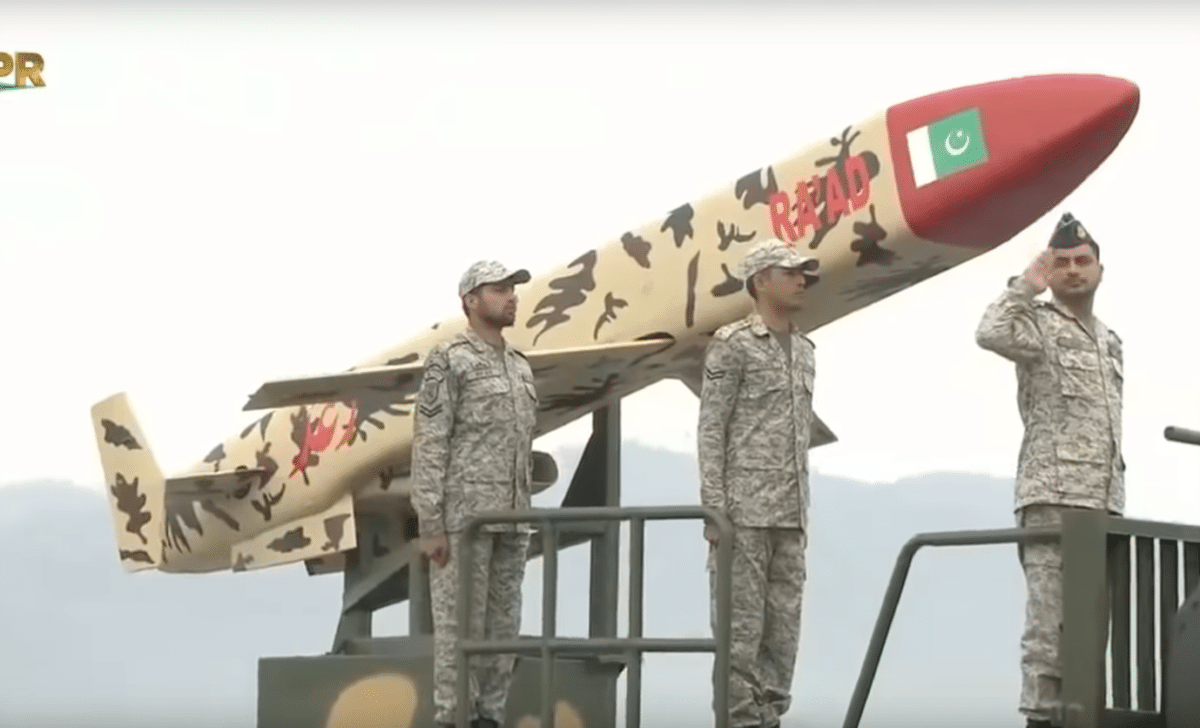Pakistan Prepares JF-17 Thunder to Carry Nuclear-Capable “Raad I/II” Air-Launched Cruise Missiles
Pakistan has reportedly prepared its JF-17 "Thunder" fighter jets, developed in collaboration with China, to carry the air-launched cruise missile (ALCM) "Raad," which can be equipped with a nuclear warhead.
(DEFENCE SECURITY ASIA) — Pakistan has reportedly prepared its JF-17 “Thunder” fighter jets, developed in collaboration with China, to carry the air-launched cruise missile (ALCM) “Raad,” which can be equipped with a nuclear warhead.
According to a study by the Federation of American Scientists (FAS), this conclusion is based on images released by the Inter-Services Public Relations (ISPR) and video footage from the 2023 Pakistan Day parade showing the fighter jet carrying the “Raad.”
Using photo analysis techniques, the American NGO noted that the length of the cruise missile developed by Pakistan matches the length of the cruise missile carried by a truck during the parade.
The FAS concluded, “Pakistan has likely integrated the air-launched cruise missile ‘Raad,’ which can be equipped with a nuclear warhead, with the JF-17 fighter jet.”
This also suggests that Pakistan might be planning to retire its Mirage III/IV fighter jets, which were previously responsible for carrying and launching nuclear-armed missiles.

Pakistan, a nuclear power in South Asia alongside its traditional rival India, which also possesses nuclear weapons, has been developing its air-launched cruise missile “Raad” (Hatf 8) fitted with a turbojet engine, capable of hitting targets at approximately 350 km.
However, the latest variant, “Raad II,” is claimed by the Pakistan Armed Forces to have a range of 600 km, double that of the initial version.
“The latest Raad II variant significantly enhances Pakistan’s air-launched standoff capability against both maritime and land targets.”
The “Raad” cruise missile also has an anti-ship variant named “Taimoor.”
The subsonic “Raad” cruise missile was first tested by the Pakistan military in 2007. In design, the “Raad” resembles other air-launched cruise missiles such as the SCALP EG/Storm Shadow developed by MBDA, Taurus KEPD, among others.
Pakistan describes the “Raad” cruise missile as “low altitude, terrain-hugging, and highly accurate.”

The Pakistan military is known to be working towards retiring its Mirage III/IV fighter jets developed by Dassault Aviation from France.
Currently, Pakistan operates around 130 JF-17 fighter jets developed jointly with China. The latest variant, JF-17 Block III, is rumored to incorporate technology from China’s fifth-generation fighter, the J-20 “Mighty Dragon.”
The fighter jet was developed by the Pakistan Aeronautical Complex (PAC) and Chengdu Aircraft Industry Group (CAIG) from China.
Pakistani defense analysts describe the JF-17 Block III as a “game changer” in the country’s aerial competition with its traditional rival, India.

Among the new capabilities of the JF-17 Block III compared to the Block II variant is the inclusion of the Active Electronically Scanned Array (AESA) radar “KLJ-7A,” developed by China’s China Electronics Technology Group.
Chinese military analysts claim that the AESA KLJ-7A radar is comparable to the AN/APG-81 radar used by the American fifth-generation fighter jet, the F-35, and the N036 phased array radar used by Russia’s Su-57. — DSA



Comments are closed.